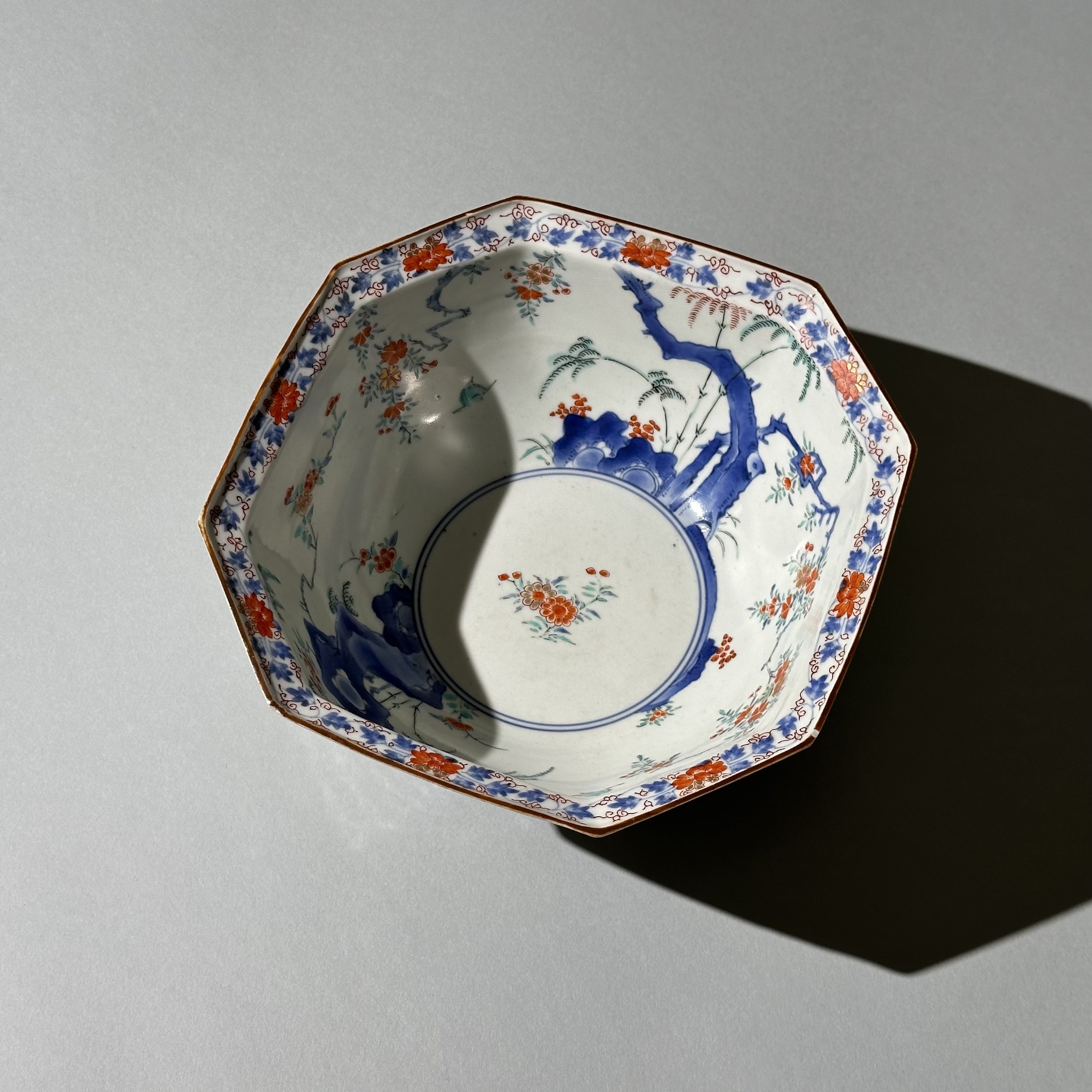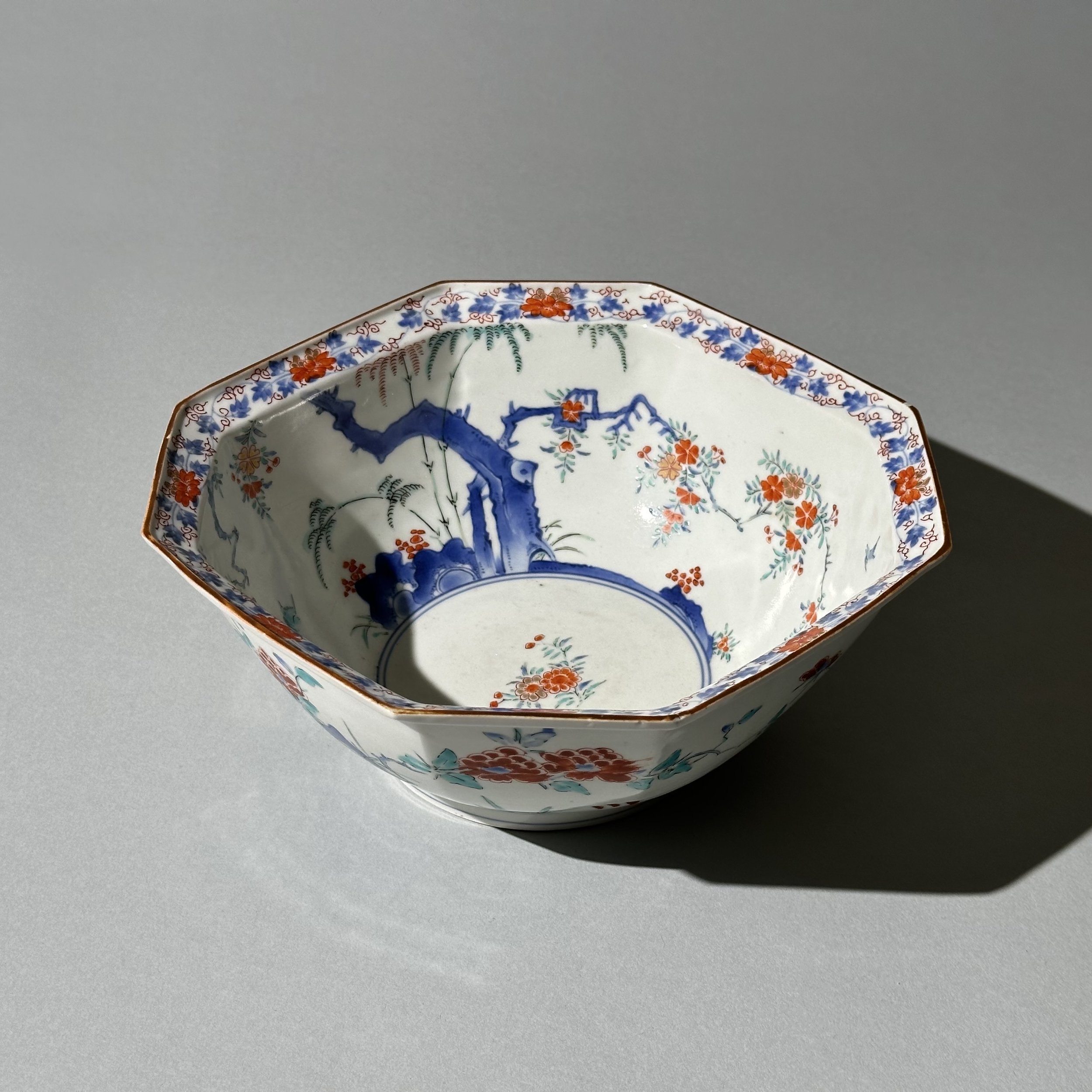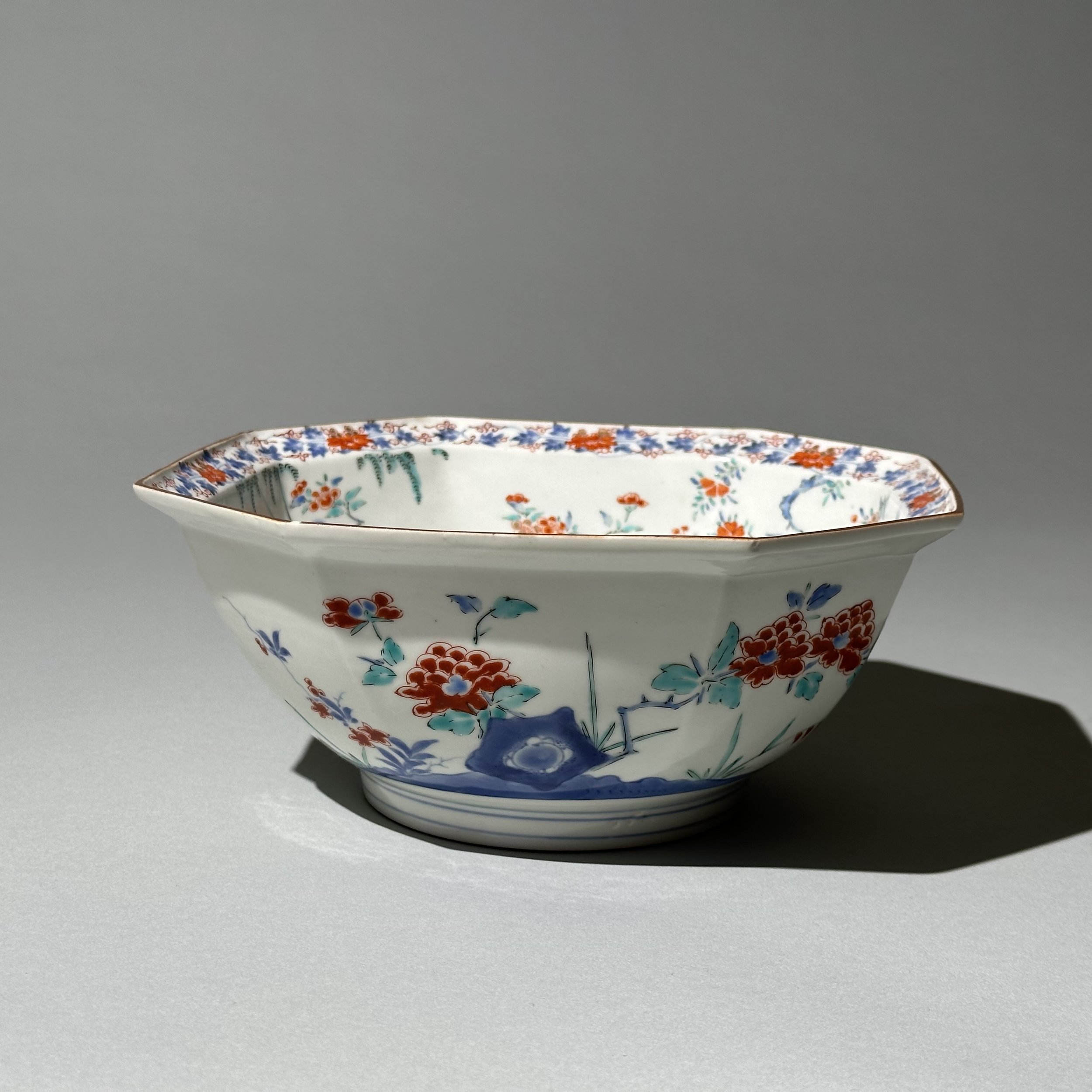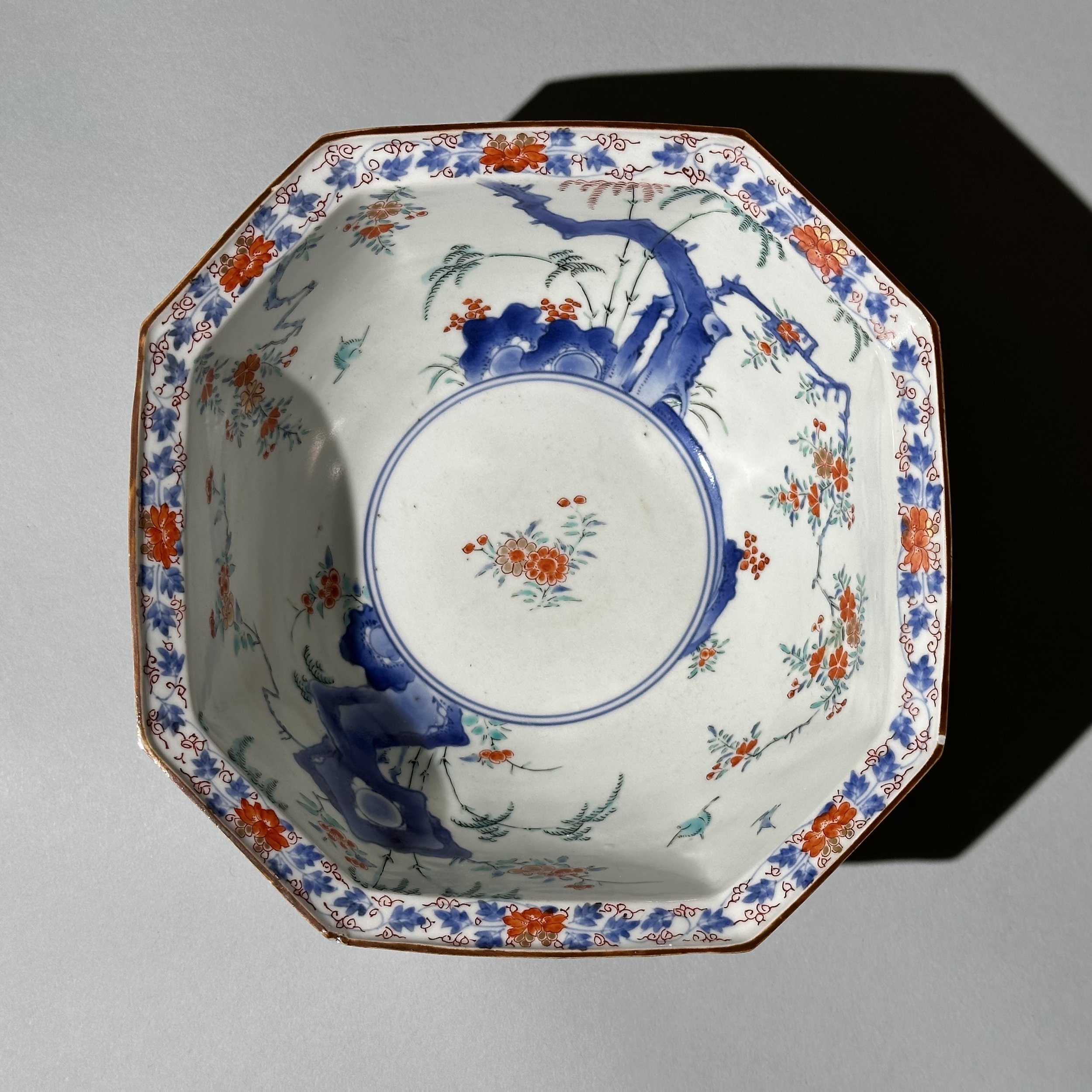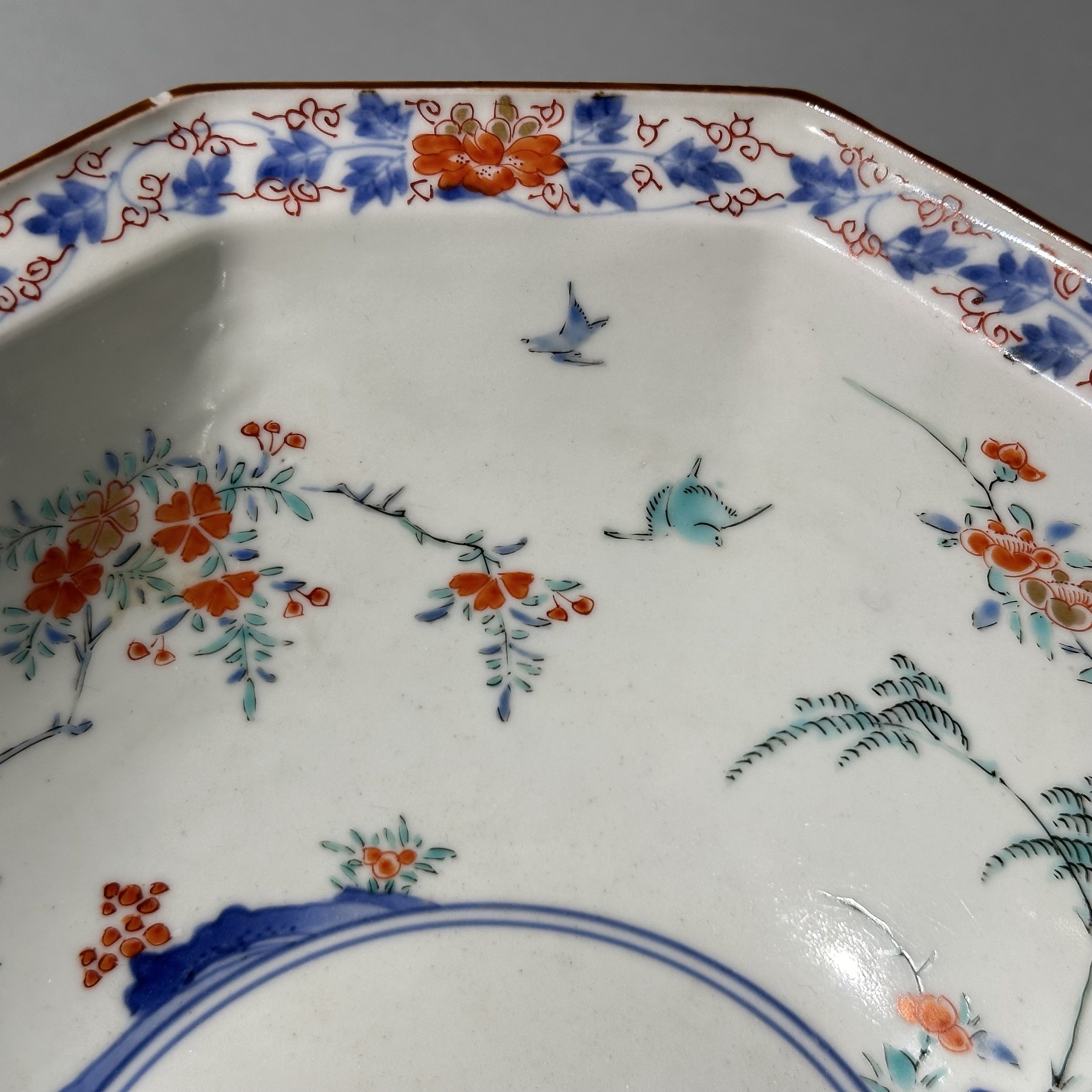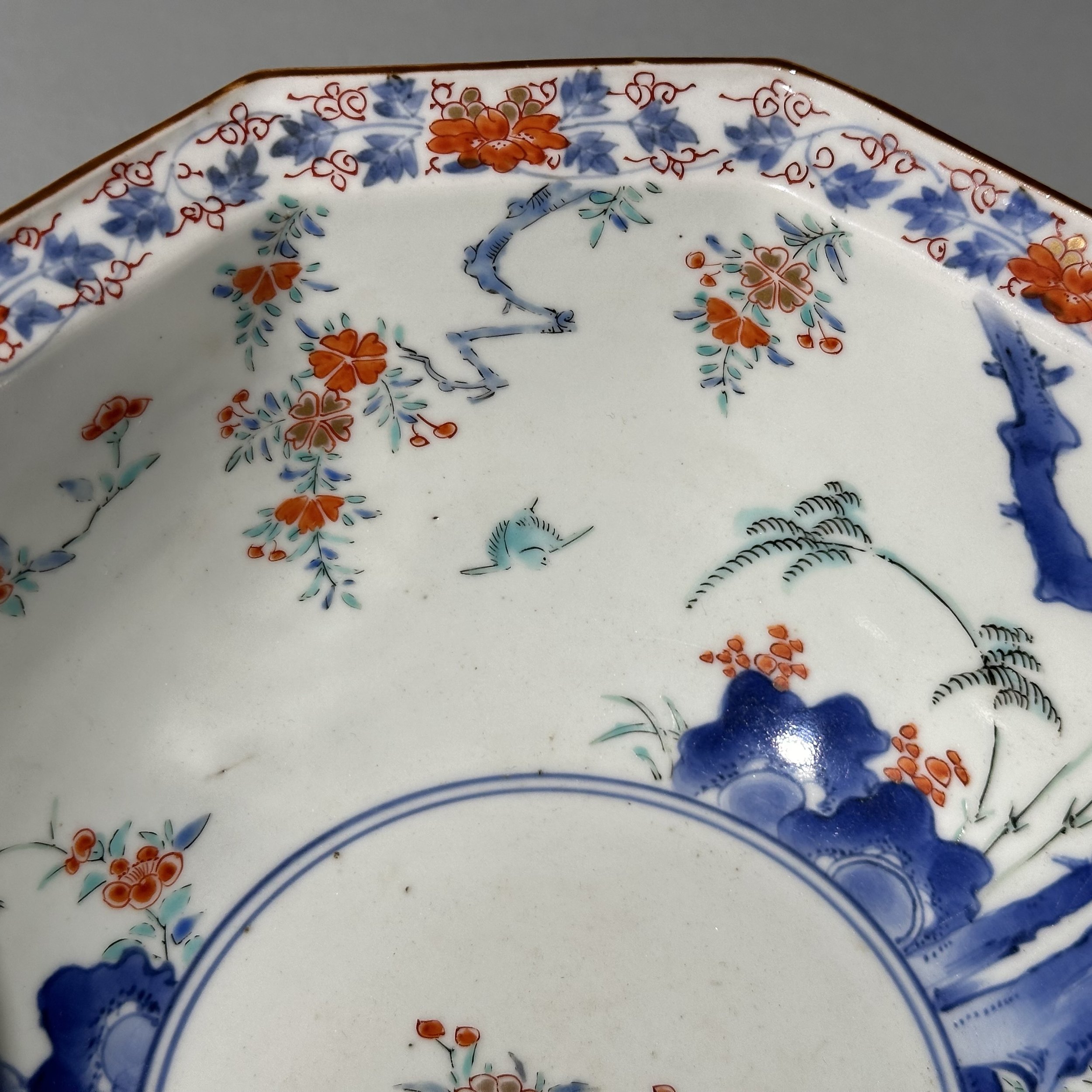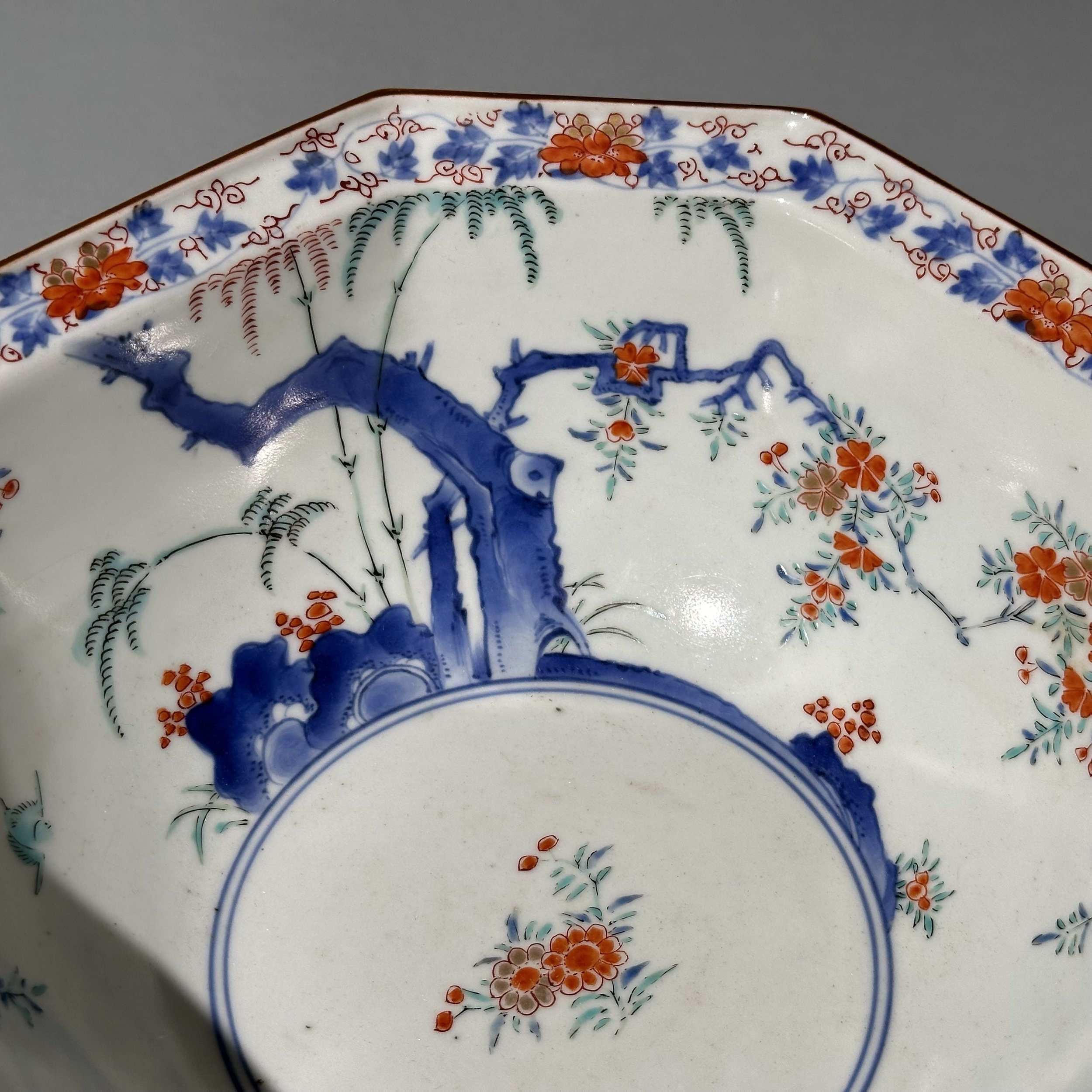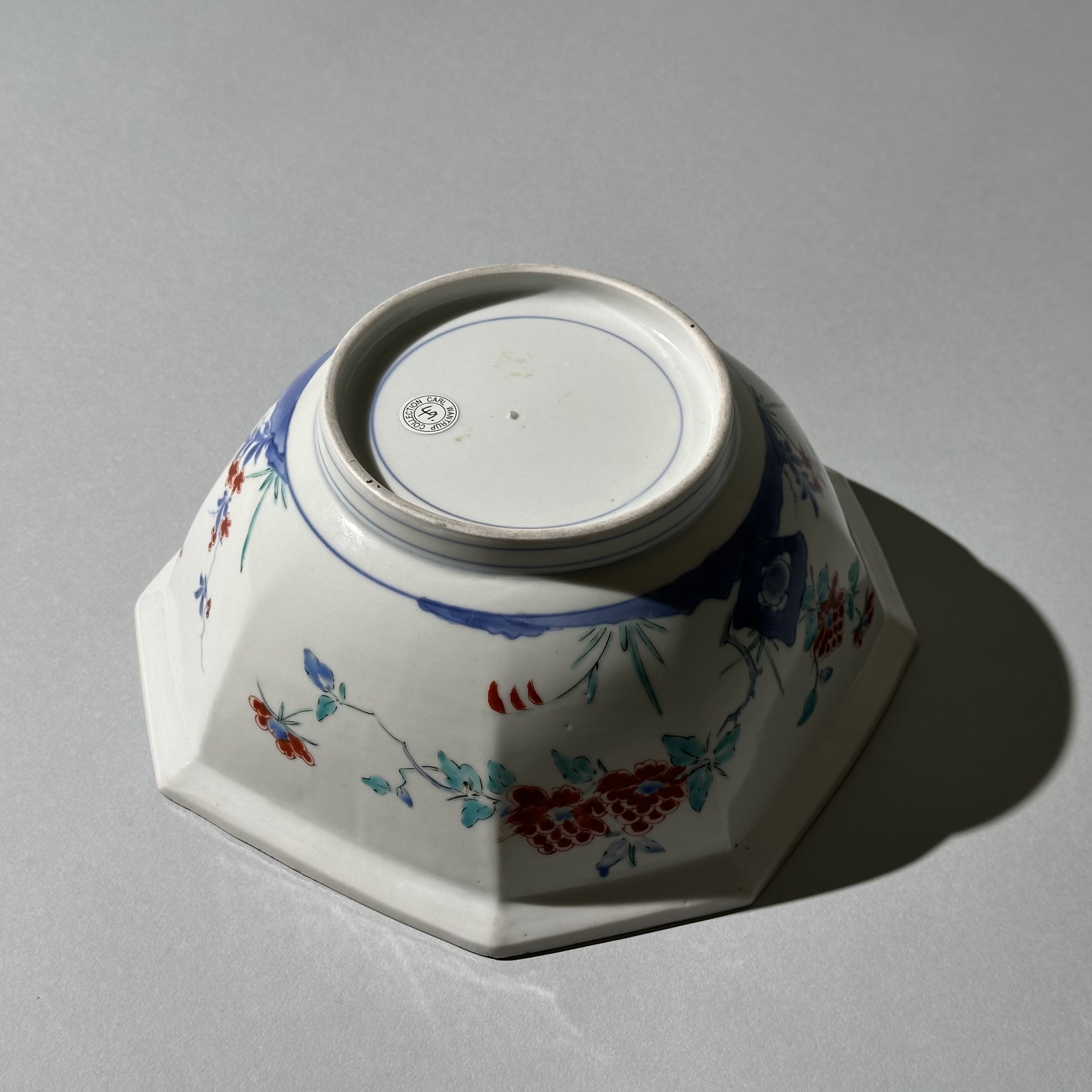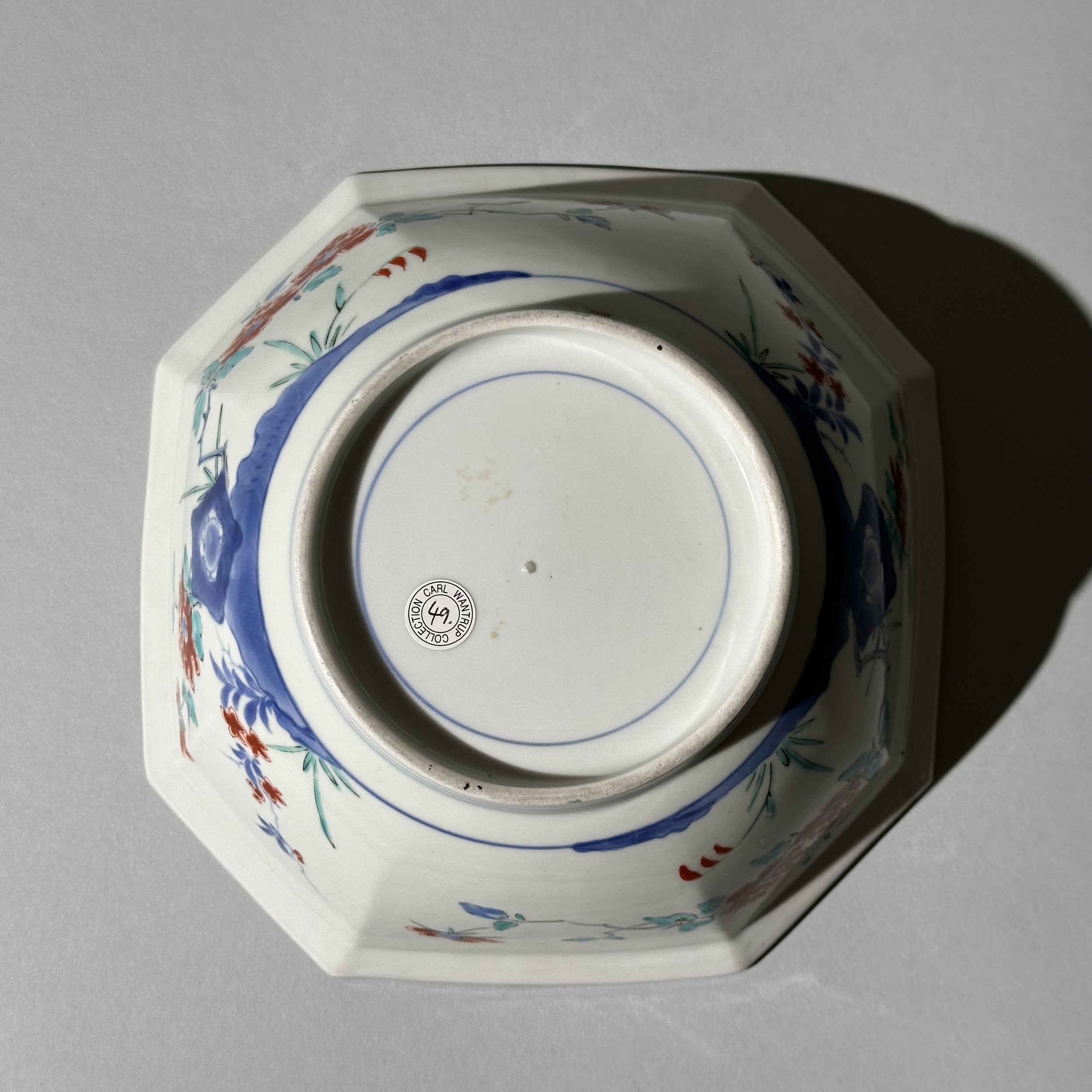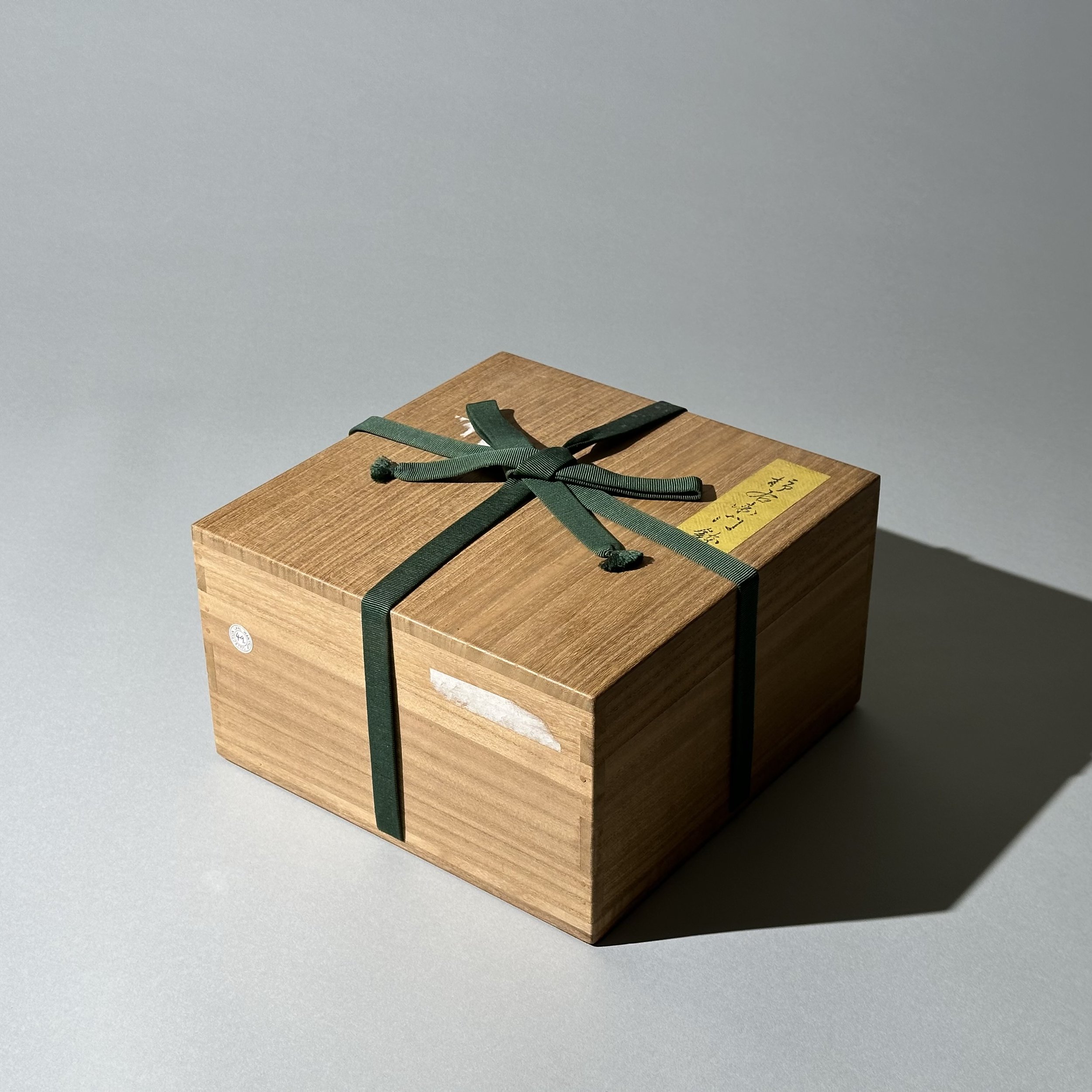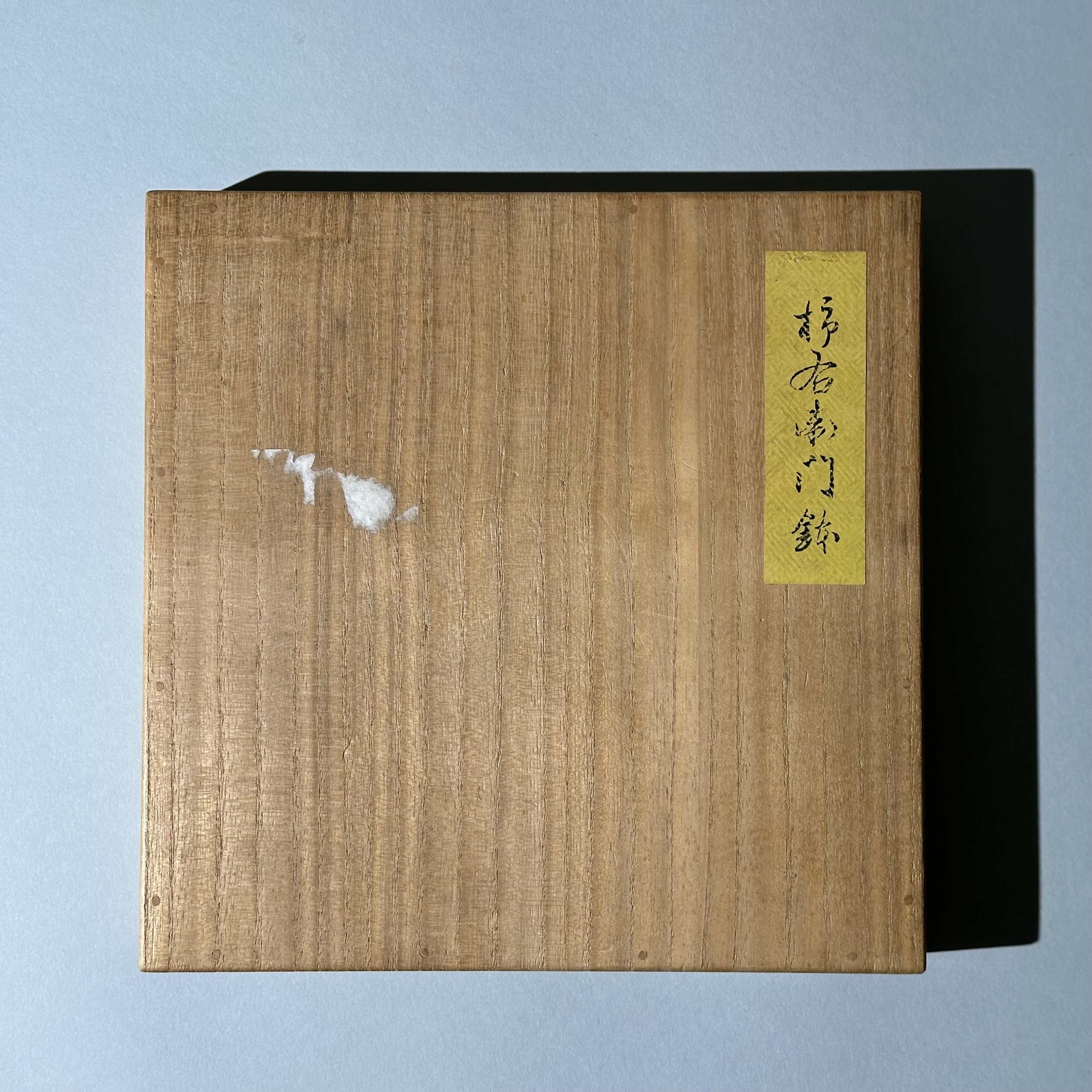Kakiemon octagonal bowl
Japan, Hizen Province, Kakiemon kiln
Edo Period (1603-1868), 1670-1690
Moulded in octagonal form, decorated with cherry and plum trees with bamboo and flying birds in underglaze blue and overglaze enamels. 9cm high, 22cm diameter. A couple of small flakes to the rim. Together with an old Japanese box.
Catalogue 49.
For other examples of this pattern see:
Shibata Collection Volume V, cat. 195, p 141.
National Gallery of Victoria, accession number 2018.593 (purchased with funds donated by Pauline Gandel)
Kakiemon
The title Kakiemon describes both a member of The Kakiemon family and a style of Arita enamel-decorated ceramics dating back to the 1660s. The name derives from the persimmon (J. kaki) as the red on early Kakiemon ceramics reminded people of the colour of the persimmon fruit. There are really two classes of ceramics that fall under this title. The first is the works attributed to the Kakiemon family. These are characterised by being highly refined and flawless in their manufacture, usually moulded and asymmetrically decorated in clear on-glaze enamels in a fairly sparse style. A more generic use, sometimes referred to as Kakiemon style, covers works that are on-glaze enamel decorated but often turned on a potter’s wheel and with denser decoration. Both forms are hand decorated and limited in their availability. It was this style of decoration that influenced early European ceramics (Bow, Meissen, Chantilly) and was the bridge between Japanese and European ceramics.
Japan, Hizen Province, Kakiemon kiln
Edo Period (1603-1868), 1670-1690
Moulded in octagonal form, decorated with cherry and plum trees with bamboo and flying birds in underglaze blue and overglaze enamels. 9cm high, 22cm diameter. A couple of small flakes to the rim. Together with an old Japanese box.
Catalogue 49.
For other examples of this pattern see:
Shibata Collection Volume V, cat. 195, p 141.
National Gallery of Victoria, accession number 2018.593 (purchased with funds donated by Pauline Gandel)
Kakiemon
The title Kakiemon describes both a member of The Kakiemon family and a style of Arita enamel-decorated ceramics dating back to the 1660s. The name derives from the persimmon (J. kaki) as the red on early Kakiemon ceramics reminded people of the colour of the persimmon fruit. There are really two classes of ceramics that fall under this title. The first is the works attributed to the Kakiemon family. These are characterised by being highly refined and flawless in their manufacture, usually moulded and asymmetrically decorated in clear on-glaze enamels in a fairly sparse style. A more generic use, sometimes referred to as Kakiemon style, covers works that are on-glaze enamel decorated but often turned on a potter’s wheel and with denser decoration. Both forms are hand decorated and limited in their availability. It was this style of decoration that influenced early European ceramics (Bow, Meissen, Chantilly) and was the bridge between Japanese and European ceramics.
Japan, Hizen Province, Kakiemon kiln
Edo Period (1603-1868), 1670-1690
Moulded in octagonal form, decorated with cherry and plum trees with bamboo and flying birds in underglaze blue and overglaze enamels. 9cm high, 22cm diameter. A couple of small flakes to the rim. Together with an old Japanese box.
Catalogue 49.
For other examples of this pattern see:
Shibata Collection Volume V, cat. 195, p 141.
National Gallery of Victoria, accession number 2018.593 (purchased with funds donated by Pauline Gandel)
Kakiemon
The title Kakiemon describes both a member of The Kakiemon family and a style of Arita enamel-decorated ceramics dating back to the 1660s. The name derives from the persimmon (J. kaki) as the red on early Kakiemon ceramics reminded people of the colour of the persimmon fruit. There are really two classes of ceramics that fall under this title. The first is the works attributed to the Kakiemon family. These are characterised by being highly refined and flawless in their manufacture, usually moulded and asymmetrically decorated in clear on-glaze enamels in a fairly sparse style. A more generic use, sometimes referred to as Kakiemon style, covers works that are on-glaze enamel decorated but often turned on a potter’s wheel and with denser decoration. Both forms are hand decorated and limited in their availability. It was this style of decoration that influenced early European ceramics (Bow, Meissen, Chantilly) and was the bridge between Japanese and European ceramics.

